Spülbecken aus Edelstahl are very popular for several reasons. This article is all you need to know about stainless steel sinks so you can make the right decision.
It is the most popular sink material in home and commercial kitchens for good reason: stainless steel sinks are durable, low maintenance, heat and stain-resistant, affordable and resistant to chipping and cracking.
If you are considering a stainless steel sink, please read this guide first to answer all your questions and clarify the terminology that comes with stainless steel sinks.
Advantages and disadvantages of stainless steel sinks
As with all sink materials, stainless steel has its advantages and disadvantages.
Vorteile einer Edelstahlspüle
- Dauerhaft
- Easy to maintain
- Long life expectancy
- Resistant to heat and stains
- Economical
- Does not chip or break
- Antibacterial properties; easy to disinfect
- Multiple options
- Environmentally friendly: recyclable; many are made from recycled materials
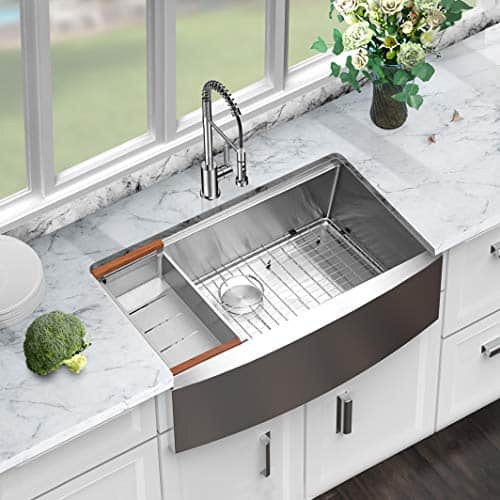
Nachteile einer Edelstahlspüle
- May scratch or dent
- Prone to water spots if not properly cared for
- Limited color options
Terminology of Stainless Steel Sink
To help you to better understand the Edelstahl-Spüle, we will explain the terminology in the stainless steel industry so you can compare sinks and look for the best quality.
What is a stainless steel gauge?
Der Begriff “Messgerät” in relation to stainless steel refers to the thickness of the steel. 16 to 22 gauge steel is the most used gauge. The lower the number, the thicker the steel. For comparison’s sake, 16 gauge steel is 0.0625 inches thick, while 22 gauge steel is 0.0313 inches thick – less than half!
Sinks with lower gauges are more durable and have a longer life expectancy. Thinner sinks are more likely to dent and break and echo when you wash dishes. A 16- or 18-gauge sink uses the highest quality steel.
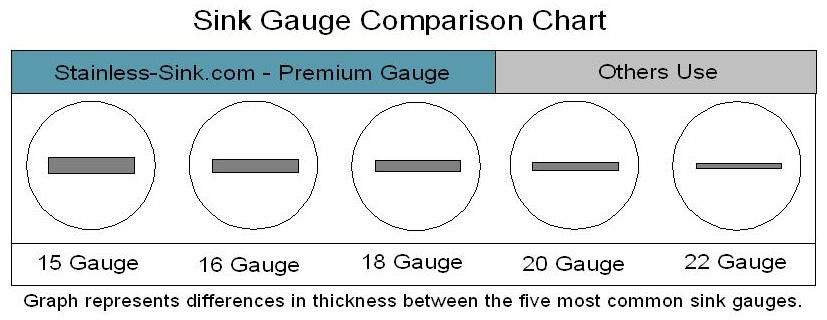
What is a stainless steel grade?
The grade of stainless steel indicates the percentage of chromium and nickel contained in the steel. For example, 18/8 stainless steel contains 18% chromium and 8% nickel, which is an excellent ratio for stain resistance. The higher the grade, the better the steel.
What is a stainless steel sink series?
The series of a sink is intertwined with its grade. Look for the 300 series of stainless steel; 304 is the most widely used and is available in 18/8 grade. Another common series is 316, also known as surgical grade or marine grade, which uses 18/10 grade stainless steel.
Tip of the trade: Place a magnet over the sink. If it sticks, it’s not 300 series.
What is the radius of the sink?
This is the inside corner of the sink. A Senke mit Nullradius has all corners at a 90-degree angle, giving it a sharp, modern look. The 90-degree angle is very difficult to clean; a small radius such as a 1/2″ radius kitchen sink is a good alternative. They have flat walls, giving us a square look, although the corners are slightly curved for easy access.
For illustration purposes, the zero-radius receiver is shown below.
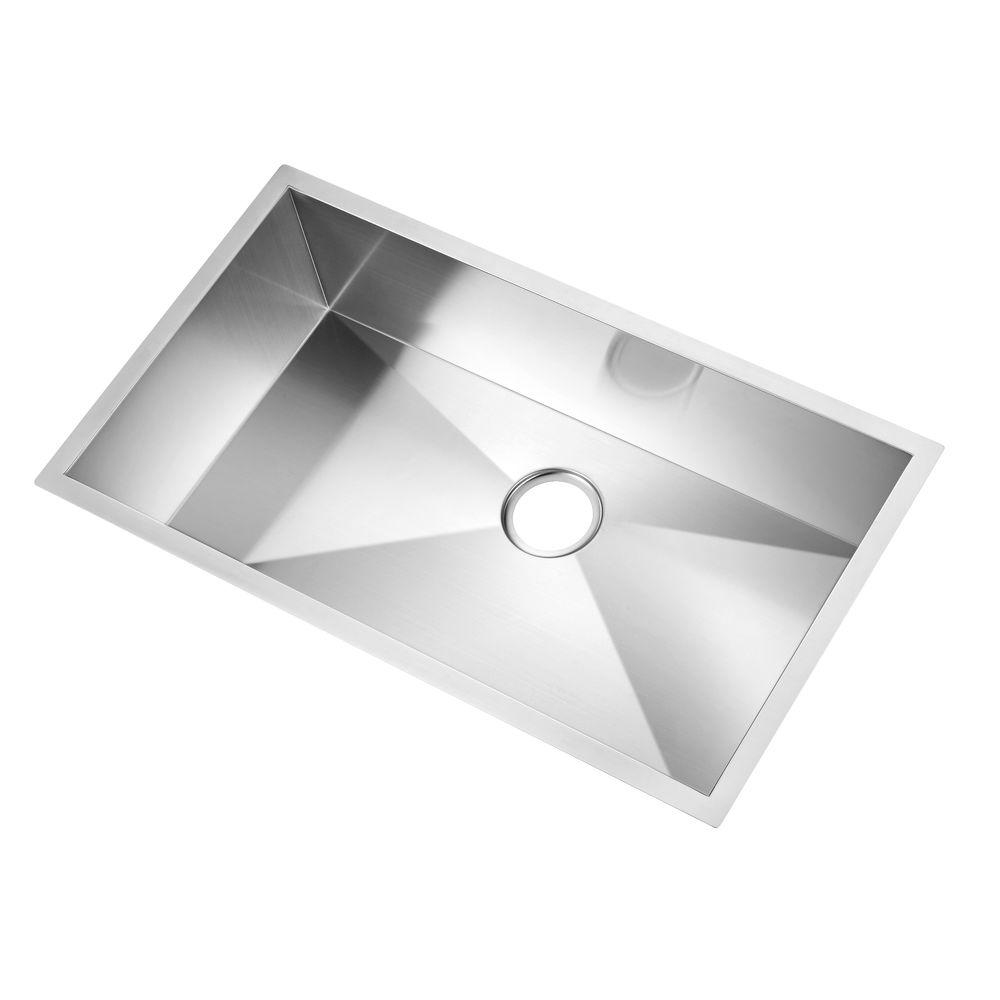
While a 1-3/4″ radius sink looks like this.
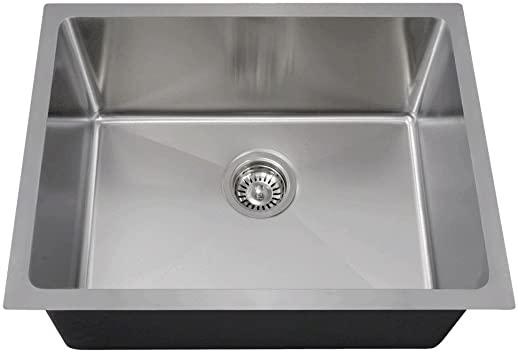
What is Stamp Sink and Fold Sink?
When you see a “stamp” or “fold” on a sink, this tells you how the sink was formed. Stainless steel sinks are manufactured using two different methods.
Stamping, in which a die is used to heat and shape the steel, or
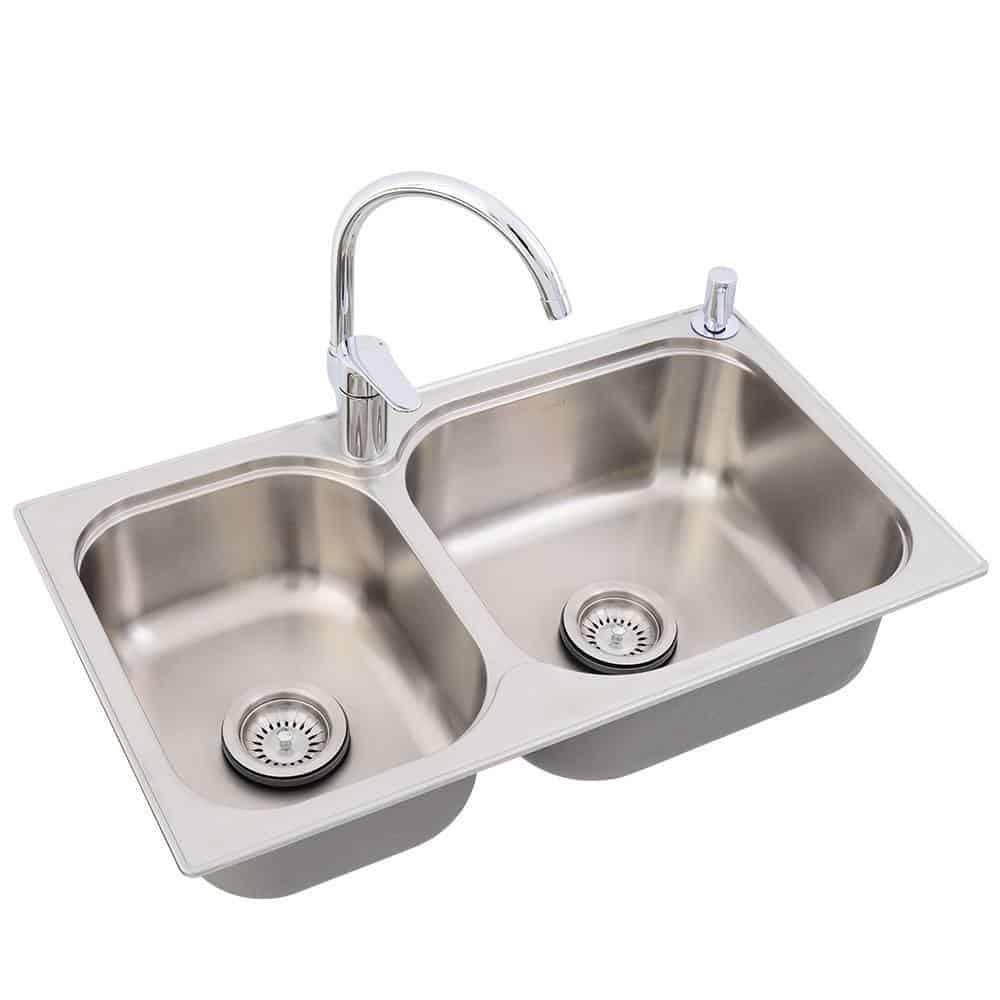
Folding, when a steel plate is cut at the corners, then folded and fused to form the walls of the sink. Folded sinks are considered to be of better quality due to the uniform thickness of the entire sink, which can be compromised when the steel is stretched for stamping.
See how the stamping process works here.
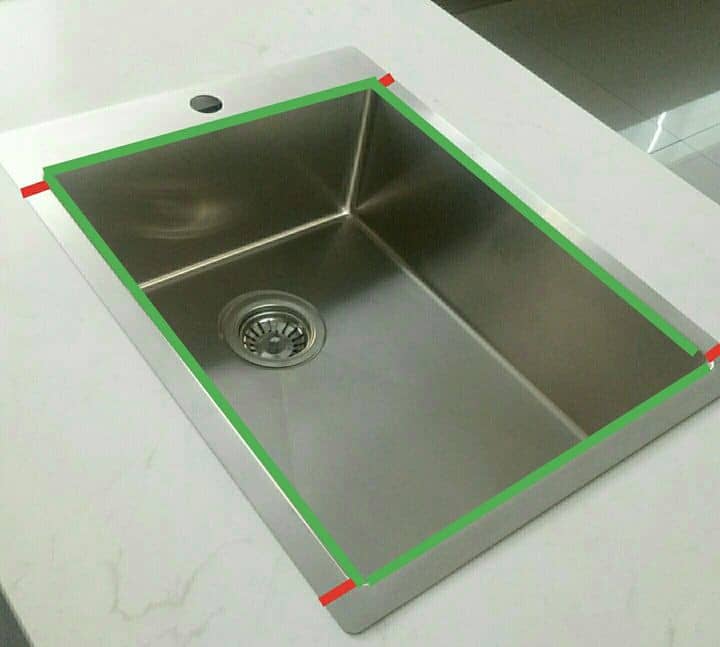
How is a stainless steel sink configured?
Since stainless steel is so popular, you are sure to find the right stainless steel for your kitchen. If you stack plates often, use large cookware or baking pans or cook a lot, a single-bowl stainless steel sink may be your best choice; if you prefer separate bowls for dirty dishes and food preparation, try a double-bowl stainless steel sink. You may even need a three-bowl sink to suit your needs!
These sinks are versatile. You can choose from under mounts, top mounts, or even farmhouse stainless steel sinks (they’re beautiful!). They come in every conceivable shape, from round to rectangular, d bowl to square, and novel shapes to fit every kitchen.
Many stainless steel sinks feature features that simplify food prep and cleanup; look for countertop sinks or sinks with integrated drainboards for efficiency. The options are virtually limitless.
What finishes are available for stainless steel sinks?
Der finish of a sink depends greatly on preference. The most common choices are
- Mirror finish: extra shiny, no visible particles, looks lovely, but most likely to show visible scratches and water damage
- Brushed and matte finishes: darker, camouflage scratches
- Satin: the most popular choice, shiny but not too shiny
- Textured finishes: hide damage, but can be difficult to clean
Because stainless steel naturally produces a subtle sound and amplifies the clicking of dishes and silverware, many quality sinks are equipped with sound-deadening pads on the bottom of the sink.
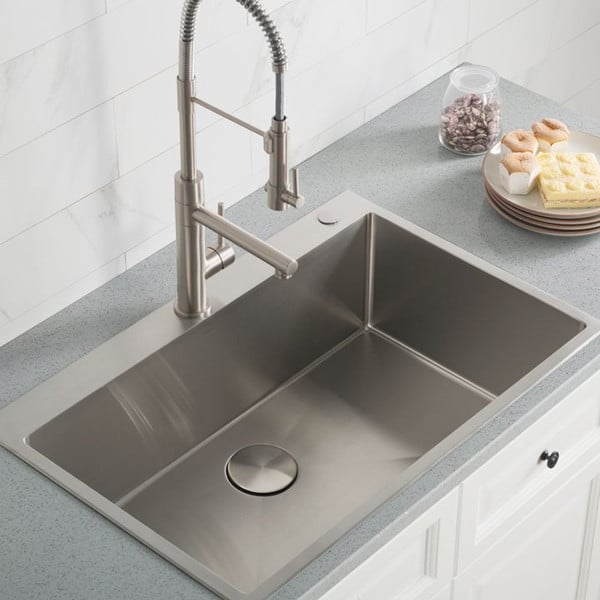
What is the price of stainless steel sinks?
Stainless steel sink is one of the most affordable kitchen sink available. You can find quality stainless steel sinks for less than $100; depending on size, brand and other factors, stainless steel sinks can cost thousands of dollars, but most are reasonably priced and there are multiple options for every budget.
How to care for stainless steel sinks
While scratches are not uncommon with stainless steel sinks, wear marks usually soften easily and eventually become part of the sink’s unique pattern and texture.
Stainless steel sinks are usually the easiest to maintain and do not require special treatments or cleaners. However, with proper (and easy!) care and attention to detail, the life of your stainless steel sink can be extended; properly maintained to extend its life expectancy and maintain a new and shiny appearance for as long as possible.
To keep your stainless steel sink in top condition, follow these rules.
Do
- Wipe the sink with a soft cloth after each use (preferably) to avoid water stains
- Rinse the sink after use to prevent food residue from sticking
- Clean the sink thoroughly at least once a week with soap or stainless steel sink cleaner (see our list of quality products below) and a non-abrasive sponge or rag; rinse thoroughly to remove all cleaning residue
- Always clean with the grain, not the other way around
- Use stainless steel sink grids (not rubber mats, which can cause staining) to protect sink bottoms from scratches and bites; many sinks have custom-sized grids for exact fit
Don’t
- Allow metal cans or food particles to come in contact with the sink surface for extended periods of time
- Use knives to cut directly on stainless steel surfaces
- Leave cleaning products or wet sponges on the sink to dry; many may interfere with the finish
- Use abrasive materials such as steel wool or wire brushes for cleaning – use only scratch-resistant cleaning pads
- Use bleach cleaners, which can corrode steel
- Store open containers with cleaners or chemicals (such as acids, bleach, sodium chloride, lye, toilet bowl cleaners, drain cleaners, or hard water stain removal products) under the sink

Recommended Cleaning Products
- Fantastik Antibacterial Heavy Duty
- Formula 409 Antibacterial All Purpose
- Windex Original
- Bar Keeper’s Friend Soft Cleanser
- Natural cleansing solution.
- Baking soda scrub, then rinse with white vinegar
- Club Soda for a radiant glow
- A thin layer of olive oil to add shine
- Orange or lemon peel (scrub clean surfaces with the peel to deodorize and glow)
Now that you have this key information, it may greatly help you purchasing of Spülbecken aus Edelstahl. You’ll rest easy knowing you’ve made a wise decision.










